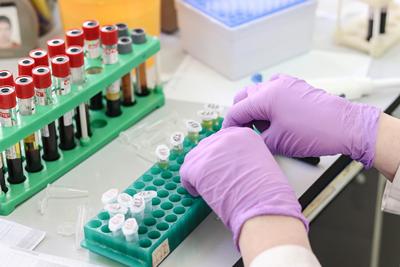Diabetes drug offers potential option for breast cancer treatment

Research from the University of Southampton has shown that metformin, commonly used to treat Type 2 diabetes, could make breast cancer cells susceptible to new treatments.
During the study, funded by Breast Cancer Now, researchers used metformin to treat breast cancer stem cells, which are thought to be involved in the spread of breast cancer around the body. In experiments done in the lab, low-dose metformin treatment led to a shift in the way these cells make energy, opening up new ways to target aggressive forms of the disease. In the future, this could lead to the development of new breast cancer drugs and treatment combinations which can target breast cancer stem cells, the researchers believe.
The new study, led by Dr Jeremy Blaydes and published in the journal Carcinogenesis, found that the diabetes drug metformin made triple negative breast cancer stem cells more reliant on glucose to make their energy and forced them to increase a process called glycolysis.
Typically, breast cancer stem cells rely more on oxygen for energy production but metformin treatment changed this, creating new ways to stop the growth of these cells.
Following the shift in how these cells make their energy, the team found that the cells had also increased the activity of proteins known to drive the growth of breast cancer, called ‘CtBPs’. However, the researchers showed that turning off the CtBP genes, resulted in a 76 per cent decrease in the growth of breast cancer stem cells. Molecules which block these proteins are currently being developed with the hope they could stop the growth of these cells in patients.
Dr Blaydes said: “Our work has given us the first glimpse into how changes in metabolism can alter the behaviour of breast cancer stem cells and reveal new targets for therapy. We are only beginning to scratch the surface in this area of research, and we now need to push forward the development of CtBP inhibitors as breast cancer drugs.”
The researchers also noticed a change in the production of several other proteins. These could, in the future, be used as a measure to see if cancer stem cells have undergone this energy shift, indicating their vulnerability to CtBP blockers. This could lead to a much-needed new treatment option for patients with triple negative breast cancer.
Baroness Delyth Morgan, Chief Executive at Breast Cancer Care and Breast Cancer Now, said: “It’s really exciting that a diabetes drug could force breast cancer stem cells to change their energy supply to help us treat aggressive ‘triple negative’ tumours in the future.
With patients still lacking targeted therapies, and these tumours being more common in younger women, triple negative breast cancer remains one of the greatest areas of unmet need in breast cancer.”
The team now plan to develop and refine molecules which target CtBPs in breast cancer stem cells. It is hoped that targeting how these cells produce their energy could, in the future, create new treatment options for people living with breast cancer.
Researchers hope that they would be able to identify breast cancer stem cells which have undergone the change in the way they produce energy, allowing them to identify the patients that would benefit most from CtBP inhibitors.